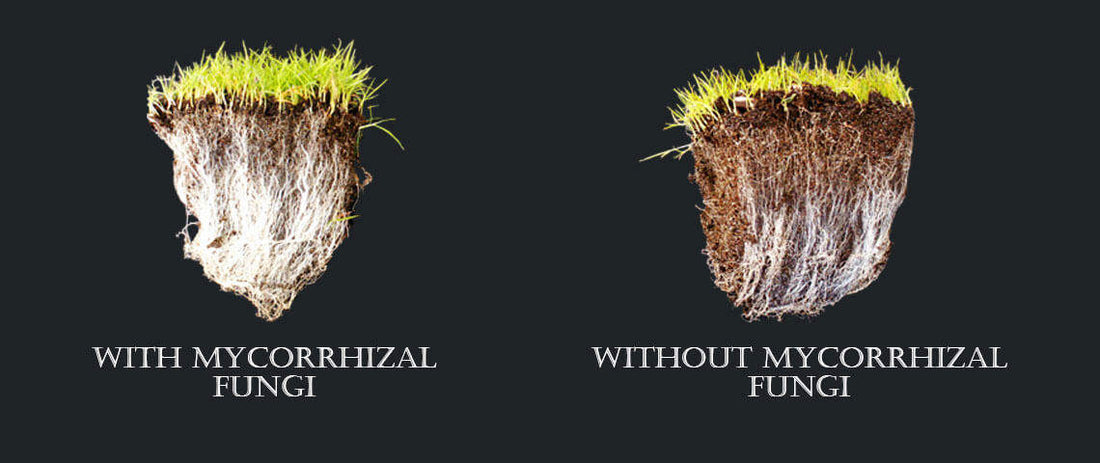
Mycorrhiza - What is it and how is it used?
Mycorrhizae are a type of beneficial fungi that form symbiotic relationships with plant roots. They play a key role in improving nutrient absorption, reducing environmental stress and improving soil structure.
How do mycorrhizae work for me?
Mycorrhizae accumulate around plant roots and enlarge the root system by forming hyphae, long, thin filaments of fungal cells. The hyphae spread in the soil away from the main roots of the plant and act as additional "roots". This greatly expands the area from which the plant can absorb water and nutrients.
Hyphae are extremely fine and can penetrate microscopic pores in the soil that are too small for plant roots. This allows the mycorrhizal fungus to absorb nutrients, which are then transported back to the plant.
Some mycorrhizal fungi can produce enzymes that break down organic materials in the soil, making nutrients more available to the plant. This includes hard-to-find sources of nitrogen and phosphorus.
Types of mycorrhizae
We mainly divide them into two types (although there are more, but less common types of mycorrhizae).
- Ectomycorrhizae - form a sheath around the roots of plants, not penetrating inside the root cells. They form a network of hyphae that softens and expands the root system of the host, as we wrote above.
- Endomycorrhizae - also called arbuscular mycorrhizae because they form structures known as arbuscules inside the root cells, further facilitating the exchange of nutrients between the fungus and the plant.
Mycorrhiza - benefits in agriculture
- Absorption - facilitates the absorption of macro- and microelements, especially nitrogen, phosphorus and potassium, which are vital for the growth of our plants.
- Stress - plants with mycorrhizal associations are more resistant to stress factors, including drought and salt stress, because mycorrhizal fungi improve water balance and maintain hydration in adverse conditions.
- Diseases and Parasites - Mycorrhizal fungi not only improve the overall health of plants (helping them fight off pathogens), but they can also produce antibiotic compounds that suppress the growth of disease-causing organisms.
- Soil - The hyphae of mycorrhizal fungi help structure the soil, increasing aeration, maintaining moisture and facilitating root penetration.
- Heavy metals - Mycorrhizae can participate in bioremediation processes by absorbing and immobilizing heavy metals in the soil, reducing toxicity and preventing the accumulation of these metals in the plant.
Application of the mycorrhiza
Mycorrhizae are best used in soil cultivation, but also work well in hydroponic systems. High amounts of chemical fertilizers can damage the mycorrhizae. Of course, you won't find them here. All Metrop and Atami fertilizers work great with Great White mycorrhiza, which is the best mycorrhizal product on the market in our opinion.
- When planting : Apply the mycorrhizal directly on or around the seeds before planting.
- When transplanting : Place in the planting hole so that the roots are directly in contact with the mycorrhizae.
Mycorrhizae need a moist environment to establish and develop. Maintain constant but not excessive soil moisture. An addition of organic fertilizers will nourish both the plants and the mycorrhizae.
For Great White mycorrhizae
This is our firm choice when it comes to mycorrhizal products. Contains 19 types of mycorrhizal fungi, 2 types of trichoderma, vitamins and glycine. The concentrated formula ensures optimal colonization of the root systems, and the water-soluble powder facilitates application and delivers the spores directly to the roots.
